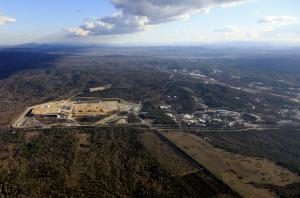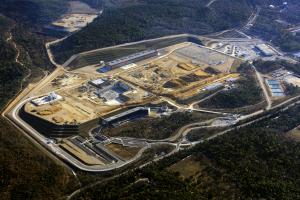From an ultralight's perspective
In the Seismic Pit, the radial pattern of the plinths is clearly visible from the air. Nearby, the completed sections of the Assembly Building foundation slab reflect the mid-afternoon winter sun. From the Headquarters building, long shadows extend almost all the way to the deserted parking lot (the photograph was taken on a Saturday). On the "green" rooftops of the Access Control Building, the Amphitheatre and the Medical Building, the sedum plants wear their winter colour—they will turn from red to green in the summer and from green to yellow in the fall.



